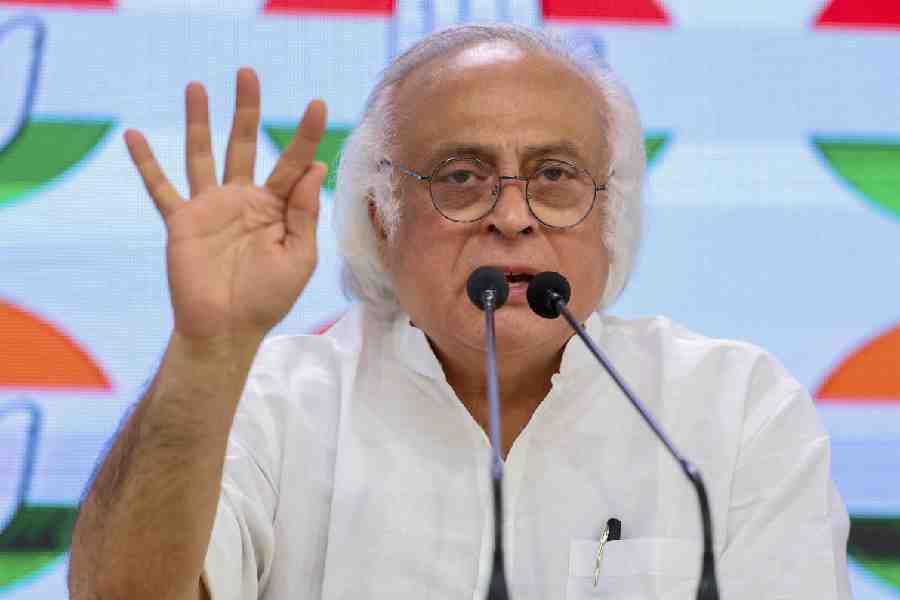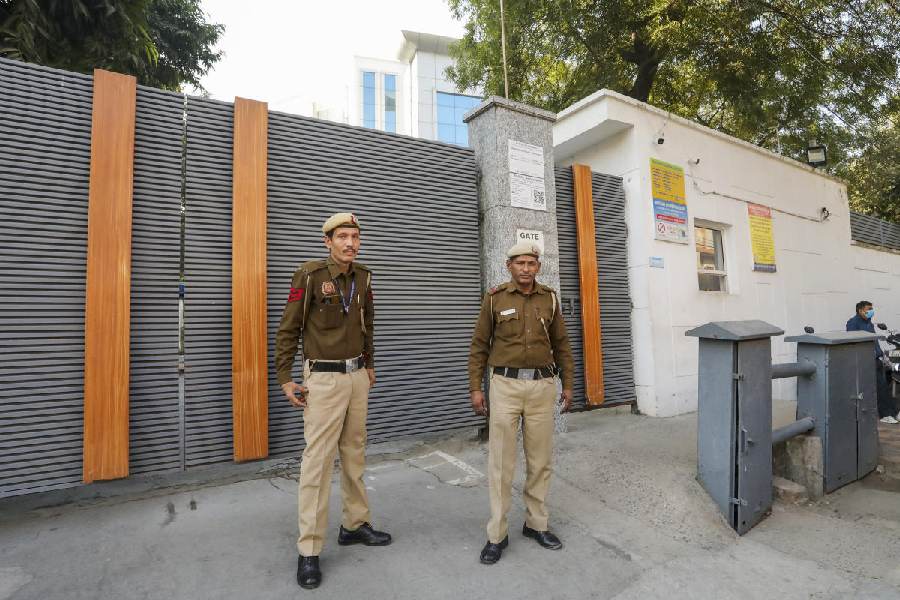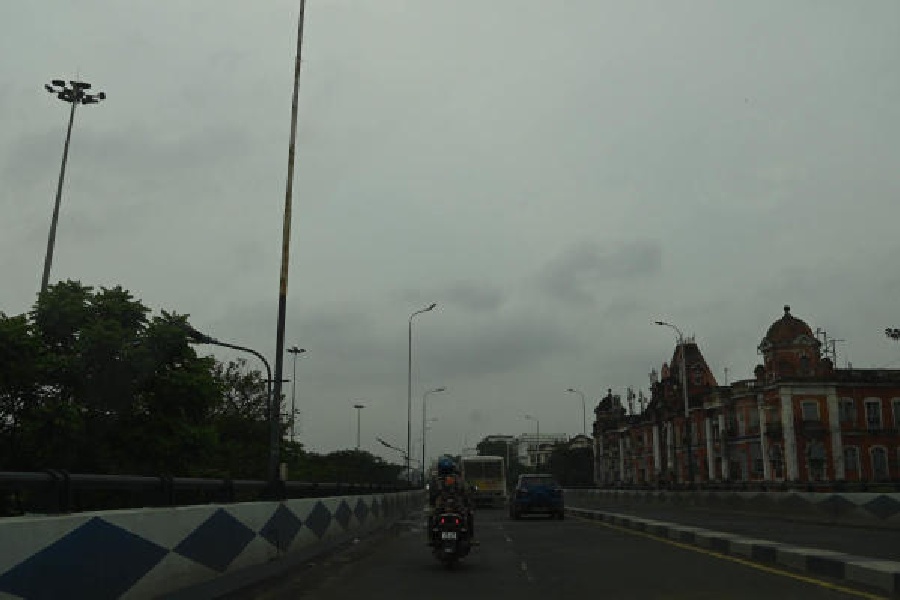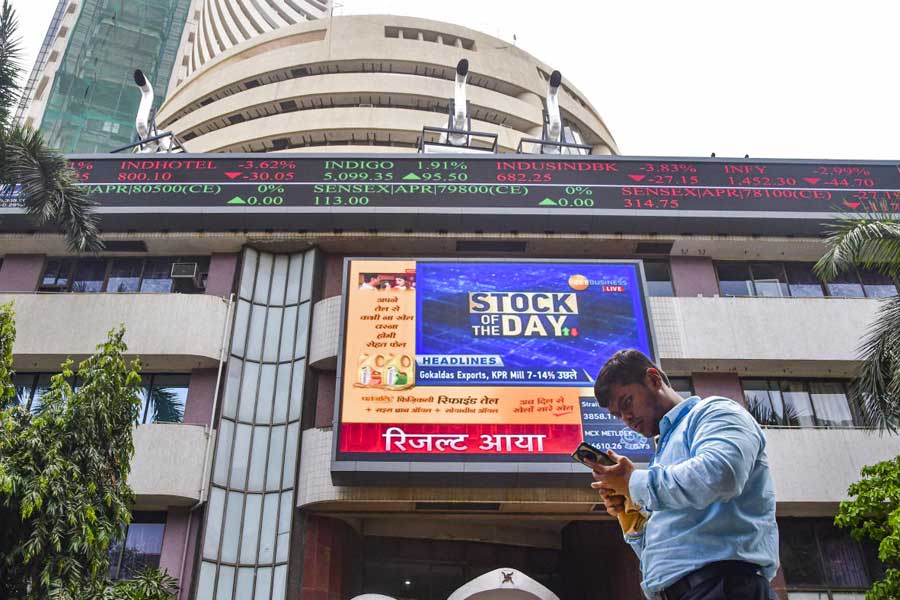 |
 |
| Inox, Forum, Calcutta; (above) Manoj Bhatia |
It’s a widescreen release coming to a theatre that’s closer to you than ever before. Consider this: In the next few weeks PVR Cinemas, the company that spearheaded the multiplex boom will be opening new theatres in Mumbai and Hyderabad. Meanwhile, Shringar Cinemas will open its box-office account with its Fame multiplex in Pimpri, Pune. And Inox Leisure will raise the curtain on its Darjeeling and Indore multiplexes.
If that isn’t enough new viewing, the Essel group’s Fun Multiplex will soon be opening two new theatres in the national capital region (NCR). And Adlabs Films will venture into Mangalore and Ghaziabad. That’s 31 new screens by February alone ? and that’s just the curtain-raiser.
The movie industry has been grumbling for years that India doesn’t have enough theatres. That the industry which produced 900 movies per year needed more outlets where people could sit in comfort and watch its releases.
Now the action is slowly starting ? but there’s a long way to go and the growth possibilities are unlimited. Says Shravan Shroff, director, Shringar Cinemas, “The market has expanded. But the industry is still in a growth phase.” Adds Saurabh Varma, head marketing, PVR Cinemas, “The industry is yet to boom in the non-metros, so there is a big opportunity.”
 |
 |
| Gold class seats at PVR; (above) Saurabh Varma |
No wonder, all the leading multiplex chains, many of them flush with cash after equity offerings through the private placement and capital market routes, have aggressive expansion plans. It’s reckoned that the five major chains ? PVR, Fame, Adlabs, Inox and Fun ? will invest over Rs 800 crore to set up around 110-120 new multiplexes (450-500 screens) by 2007-08. As of March 2005, the country had 73 multiplexes with 276 screens, according to a Yes Bank report. Even regional players like Sathyam Cinemas in Chennai are ramping up.
That’s not all. A host of technology companies like Valuable Media, Real Image and Pyramid Saimira and even multiplex chains like Essel are coaxing single-screen theatres to turn digital (see box). PVR too is deploying digital technology in its low-cost multiplexes. “India has the largest digital cinema network in the world today,” says Sanjay Gaikwad, executive director and CEO, Valuable Media.
The multiplex boom is, of course, largely spurred by the country’s retail expansion. With multiplexes ensuring footfalls, they are being wooed by the mall developers. Says PVR’s Varma, “People call us the irrigators as we’re on the top floor and we bring footfalls all the way through the mall.”
Adds Atul Goel, CEO, Fun Multiplex, “Multiplexes have created alternative entertainment destinations.”
 |
 |
| Fame, Calcutta; (above) Shravan Shroff |
Also, the fact is that India needs more theatres. Amit Khanna, chairman, Reliance Entertainment, reckons that there’s still a long way to go. He says the country has around 11,000 operational theatres, most of which are single-screen units. In per capita terms, there are only 12 screens per million people in India compared to 117 in USA. “We should have at least 35,000 screens in India,” he says.
Now the theatre chains are hoping to do just that. Having raked in almost Rs 128 crore through its recent initial public offering (IPO) of equity shares, PVR plans to set up 18 new multiplexes (82 screens) with an investment of Rs 138 crore by March 2008. That would be a huge leap forward because currently it has only 11 multiplexes with 47 screens in the NCR and Bangalore. The new offerings include two low-cost multiplexes at Latur and Aurangabad, which should be ready by April.
PVR will be getting stiff onscreen competition. Inox Leisure, which has eight multiplexes (32 screens) in seven cities today, too has drawn up pan-India plans. It intends to invest Rs 110 crore in 13 new multiplexes (58 screens) in 10 cities by 2008. It will raise part of the money through an IPO.
 |
 |
| Fun republic, Ahmedabad; (above) Atul Goel |
Shringar Cinemas (Fame) and Adlabs have more ambitious targets. The two companies own one five-screen multiplex, Fame Adlabs in Mumbai, in a joint venture. But their other projects are on their own. For instance, Shringar has four multiplexes (17 screens) in Mumbai, Nasik and Calcutta.
Shringar’s Shroff has a Rs 210-crore expansion plan to set up 30 multiplexes by 2008. After Pimpri, immediately on the anvil are Fame multiplexes in Surat, Allahabad, Aurangabad, Hyderabad and Thane. That’s 21 new screens by August 2006 alone. Shringar Cinemas raised Rs 40 lakh in an IPO last year. Now to further fund its plans, Shroff may look at another equity issue or syndicated debt.
Adlabs, which is now majority owned by the Anil Ambani group, plans to spend Rs 250 crore to add 130 screens by 2009. The company has 28 screens across six multiplexes today, which will go up to 44 screens by March 2006. Suresh Bharadwaj, CEO of Adlabs’s multiplex division, expects the turnover to increase to Rs 100 crore by 2006-07 alone from an estimated Rs 60 crore in 2005-06.
As for Fun Multiplex, it intends to set up 123 new screens across 31 multiplexes at an investment of Rs 165 crore.
Besides these, regional players like Sathyam Cinemas, which has two multiplexes in Chennai and was the first theatre in the country to deploy Hollywood-standard digital cinema, are also expanding. Sathyam will add 18 more screens (three multiplexes) across Chennai and Cochin with an investment of Rs 30 crore in 2008. The company is also scouting for four-five more sites in Chennai besides venturing into cities like Madurai, Coimbatore, Trichy and Calicut.
 |
In some ways, the multiplex business is like the retail one where you need scale to grow. Says Goel, “Unlike in a manufacturing facility, you can’t achieve operational efficiencies beyond a point here. So it’s better to roll out quickly.”
Expansion is also essential since same store or same multiplex growth rates tend to plateau off. Goel expects the Andheri Fun Republic’s revenues to drop by 5 per cent this year because of the competition. That’s why players work hard to keep the “buzz” alive in existing multiplexes with premieres, signing sprees by film casts, loyalty programmes and even gold class amenities like recliner seats ? PVR has two 32-seat gold class theatres in Bangalore.
Also, a large chain can also help get better terms from distributors. Says Adlabs’ Bharadwaj, “You can negotiate a better price if you are a chain.
Albeit Kiran Reddy, managing director, Sathyam Cinemas, believes that “content will always have the upper hand”. He also believes that the synergies and savings are essentially local. For expansion across cities means setting up separate offices and replicating media costs. “Globally too, the best local theatre, like a restaurant, tends to have the highest collections and it doesn’t matter if it is part of a chain,” he says.
To be sure, a large part of the action in Act One will be played out in the metros, where the idea is to capture catchment areas. “Convenience will drive the industry,” says Pramod Arora, vice-president, development and projects, PVR.
So PVR will open five multiplexes in Mumbai alone in 2006. Adlabs will unveil its five-screen Metro multiplex in Mumbai ? it has rebuilt the old single-screen theatre ? by March. Shringar too has four projects in Mumbai, and two each in Calcutta (South City and Lake Mall), Bangalore and Pune through 2006 and 2007. And Fun will launch four multiplexes in the NCR alone over the next two months and two in Mumbai by December 2006, while Inox will be in Chennai and Hyderabad this year.
But Goel warns that this could lead to over-crowding in places. For instance, Andheri Link Road, has three multiplexes cheek by jowl. “We are trying to make a high street of malls unlike abroad where you have one mall in a five-mile radius. There is a need to disperse into the hinterland,” he says.
That’s why the players aren’t exactly ignoring the aspirations of the Buntys and Bablis in small-town India. Rather, they are entering towns like Bhatinda, Ambala, Kota and Latur. Says Inox Leisure’s CEO Manoj Bhatia, “That’s the real India and that’s where the real growth is after the metros.” So Inox is setting up multiplexes in Lucknow, Vishakhapatnam and Jaipur in 2006.
How will all this affect viewers? The fact is that all these theatre owners will be looking to maximise revenues as they go on a hell-bent-for-leather expansion drive. But they will have to be more restrained in the smaller towns. Players like PVR intend to price tickets at around Rs 50 in smaller towns like Latur. But even at this price, the opportunity is huge. That’s because with ticket sales of three billion in 2005, the film industry raked in box office revenues of Rs 6,000 crore at an average ticket price (ATP) of Rs 20. “There is an opportunity to up this by another Rs 20. That’s why we’re going into second-tier cities,” says Goel. Fun Multiplex will launch in Agra, Lucknow and Panipat this year before moving into cities like Jodhpur, Bathinda, Gwalior and Kota in 2007.
Since the multiplex business is capital-intensive, most of the players are looking at leasing properties or developing them in partnership with property owners. Also, entertainment tax exemptions influence the choice of location since the tax ranges from 30 per cent to 100 per cent and exemptions can lower the payback period on the capital investment from four to five years to two-and-a-half to three-and-a-half years.
Filmmaker Prakash Jha’s lobbying with the Bihar and Jharkhand governments, in fact, paid off with both states exempting multiplexes from the tax recently. So much so that Jha is even considering getting into the business himself. “If the opportunity is available, we’ll look at it,” he says.
For the moment, the film industry is riding high on 2005’s box office success. But if its box office fortunes dip as they did in 2003, could it upset the multiplex players’ applecart? Says Inox’s Bhatia, 'We are dependent on quality content, but 2003 and 2006 are decades apart. Producers are making content for the multiplex today and the audience has a wider choice.” Clearly, for now at least, the players are gung-ho about their box- office ambitions.
Illustration by Suman Choudhury
Photographs by Gajanan Dudhalkar
The digital route
 |
 |
| Sanjay Gaikwad (above) and Kiran Reddy |
It has been a busy year for Sanjay Gaikwad, CEO, United Film Organisers (UFO). Gaikwad heads the digital cinema arm of Valuable Media and he has been working overtime to woo single-screen theatre owners from small towns across India. Since last April, UFO has persuaded 140 theatres from West Bengal to Rajasthan to migrate from the traditional film reel to digital technology. By April, Gaikwad intends to take the number to 500, and then to 2000 by 2007. This will entail an investment of Rs 300 crore. “Digital cinema is trying to boost films in small towns. The money which was going to piracy is now coming back into the system,” says Gaikwad.
UFO is not the only service provider promoting digital cinema. Real Image of Chennai too has linked up 50 theatres in Tamil Nadu, and hopes to digitise 500 by March 2007. These companies use satellite links to transmit digitised movies to servers in theatres, where they are screened with digital projectors. UFO and Real Image are investing Rs 12 lakh to Rs 15 lakh in digital equipment (celluloid equipment costs are similar) in each theatre against a small deposit. And they hope to recover this through a per-screening fee.
Why should theatre owners adopt digital technology? The argument is that prints are costly at Rs 60,000 a head. And since most B-grade and C-grade theatres only get prints after three-four weeks, they lose out to piracy and word of mouth. With digital transmission, theatres can capture the first-day first-show audience. Also, quality is not a concern unlike film reels, which can deteriorate within a month.
However, these companies are offering a cost-effective Indianised version of digital cinema that doesn’t match up to the Hollywood studio-prescribed Digital Cinema Initiative (DCI) standard laid out last July. In fact, Sathyam Cinemas in Chennai is the only theatre in India to install DCI-standard 2k projectors (which cost Rs 40 lakh-Rs 50 lakh). Says managing director Kiran Reddy, “It’s not about cost savings. We opted for digital to enhance the customer’s movie-going experience.”
The digital cinema juggernaut may be rolling. But industry watchers caution that companies like UFO and Real Image may repeat the mistakes made by early entrant Mukta Adlabs Digital Exhibition. Mukta Adlabs, which began in 2003, managed to digitise around 90 cinemas but almost 65 have switched back to celluloid. That’s because quality hiccups apart, what the audience really needed was refurbished theatres. As Raj Tilak, consultant, Mukta Adlabs says, “Digital is only a delivery mechanism. If the film or theatre are not good, people will not come.”
Agrees Dr Sunil Patil, CEO of PVR Cinemas’ Digital division, “Cinemas have to be a family destination to succeed.” That’s why PVR is only deploying the technology in its low-cost Latur and Aurangabad multiplexes as these markets can’t support print costs. “If Latur can only collect Rs 50,000 at the box office, why should you invest in a print here. It doesn’t benefit any stakeholder,” he says.
The Essel group’s E-City Digital Cinemas too is deploying digital technology. The company recently acquired a 51 per cent stake in Shree Vijay Raj Entertainment & Software, which controls 90 theatres in the Bombay film territory. Now, E-City, which is taking on the theatres’ distribution risk, has started the task of digitising 50. “We have gone digital to ensure we get the films. But eventually we will upgrade the theatres,” says CEO Atul Goel. The company will invest Rs 10 crore initially and Rs 100 crore by March 2008 to take its digital screens to 500. Even Reliance Entertainment is considering deploying its large fibre optic network to serve up digital cinema. “We will look at it,” says chairman Amit Khanna.
India may have taken a lead over Hollywood in digital cinema but can the players sustain their indigenous service-provider model? “E-Cinema offers a huge economic advantage to the film industry,” says Senthil Kumar, director, Real Image Media Technologies. But while there is value in that, as Reddy says, “D-Cinema is about the customer and not cost savings while E-cinema is about cost savings and not the customer.”










